We first arrived in Hanoi, the capital of Vietnam, searching for a motorbike that would help us travel across the country to the Mekong Delta. The search and purchase process kept us very busy, and although we really liked the city, we weren’t able to enjoy it fully. That’s why we decided to give it another chance when, under the pretext of renewing our Thai visa, we returned for a week.
Join us on a tour of Hanoi through this guide, where we will show you everything there is to see, do, and eat.
“Those who forget their history are condemned to repeat it” seems to be something the people of Hanoi understand very well, as they display their history and culture through a series of museums, monuments, prisons, and pagodas. No one who sets foot in Hanoi will leave without learning something new about the war.
However, they have also adapted to the influx of travelers passing through Southeast Asia, making this capital a must-see destination. In the Old Quarter, there are hundreds of accommodations and restaurants where you can enjoy rich Vietnamese cuisine, and, of course, thousands of places where you can savor the always appetizing cà phê.
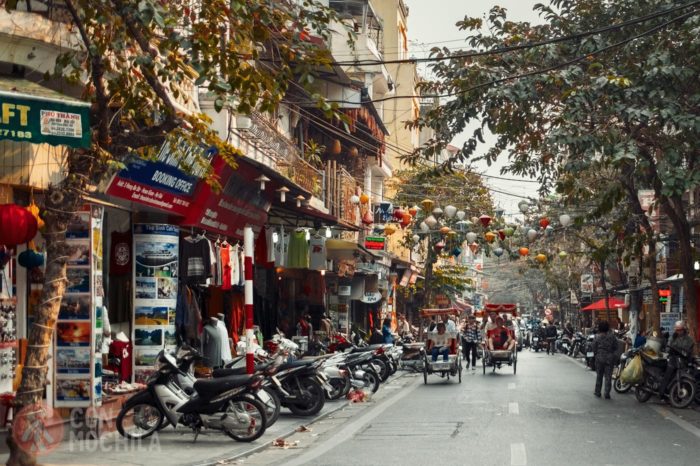
Hanoi has something special to offer year-round. Planning your trip around the seasons will allow you to make the most of your experience in this Vietnamese city.
Currently, and until further notice from Vietnamese authorities, citizens of 25 countries can travel to Vietnam without having to apply for a visa. You can obtain a 45-day visa exemption for Vietnam, allowing you to stay in the country for over a month and a half for free.
However, if you plan to stay longer, you will need to apply for a Vietnam visa. In the link above (coming soon), you’ll find all the ways to apply for it quickly and easily, with clear explanations.
It goes without saying how important it is to travel to Vietnam with a good insurance. We were the first ones to offer the famous 5% discount on IATI Insurance, but you also have it available with Heymondo Travel Insurance.
Follow the links bellow to get a discount on their website:
Hanoi is likely to be your first stop in Vietnam if you’re arriving from another country. If you’re traveling from outside Asia, the most logical option is to fly into Noi Bai International Airport, located several kilometers from the city. Numerous airlines offer flights here from various countries.
From the airport, you can reach the city by bus for just 30,000 VND (less than $2) by taking the express bus 86.
To reach or return to key points in the region such as Halong Bay or Ninh Binh (Tam Coc), there are buses available, and you can also book excursions at agencies found in the Old Quarter.
You can travel to and from Sapa by train: Hanoi-Sapa, Sapa-Hanoi, with motorbike transport included.
Nowadays, finding hotels, guesthouses, or restaurants in Vietnam with free Wi-Fi is the usual trend, although there are also those who wish (or need) to have continuous internet connection.
To help with that, we’ll tell you how to get a Vietnam eSIM and make the most of their affordable prices. And now, we also provide information about Vietnam’s eSIM with unlimited data. If you want to get one directly, use the following link (with a discount):
Hoan Kiem Lake is a symbol of the city, offering a peaceful escape in a place packed with motorbikes and a pace that never seems to rest.
In the mornings, the area comes alive with people practicing Tai Chi, while during the day it welcomes curious tourists who stroll around the lake and visit the pagoda situated on its surface.
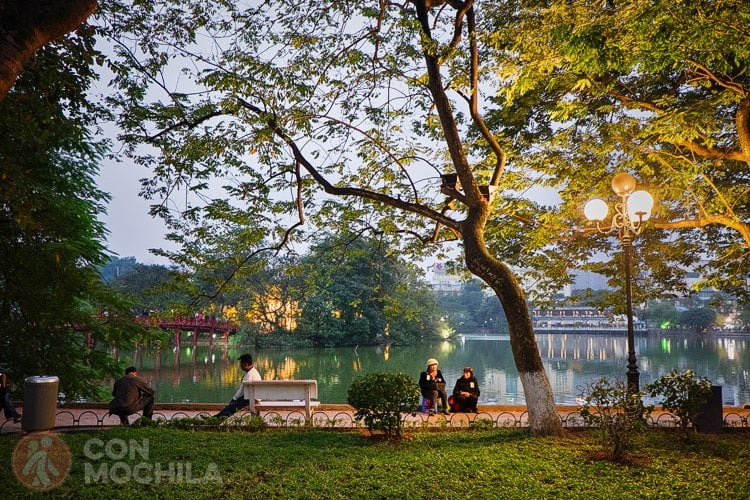
It’s a great spot for enjoying a coffee, as it’s surrounded by traditional cafés. On weekend nights, the streets are closed to traffic, and the illuminated area becomes a lively meeting point for locals, travelers, musicians, and artists.
The Old Quarter is the essence of Vietnam, concentrated in a labyrinth of narrow, winding streets filled with shops, hostels, hotels, restaurants, local food stalls, and street vendors.
Each street is named after the goods that were once sold there when this area was home to merchants and artisans (hence the prefix “hàng,” meaning merchandise or store). Some streets still retain this characteristic.
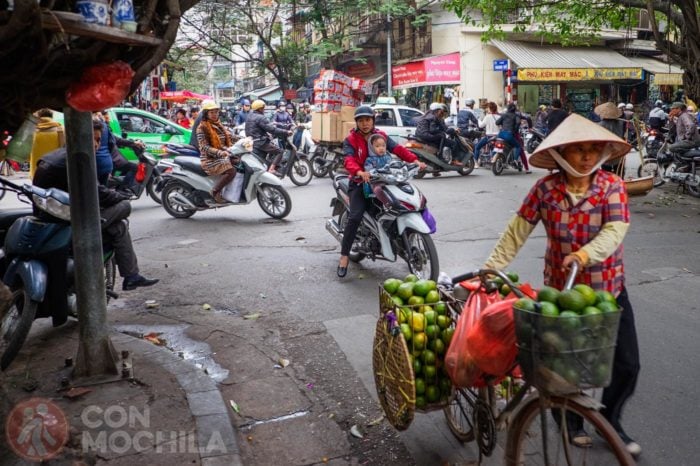
It’s also a good place to learn how to cross streets full of motorbikes, as they follow their own unique set of rules.
This traditional show often generates mixed opinions. While some find it lengthy or somewhat dull, we believe that the fact this art form has survived for centuries makes it worth a visit.
The Hanoi water puppet show features floating puppets that depict aspects of traditional Vietnamese life, such as rice harvesting or fishing, as well as some of the country’s legends.
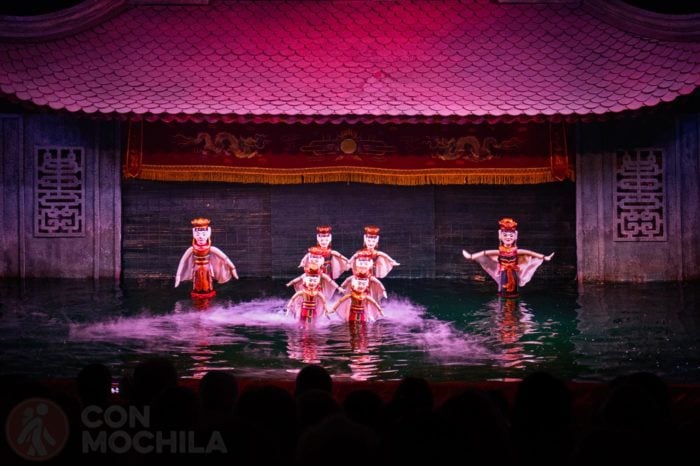
The original name is roi nuoc, and it remains very popular in Vietnam. The theatre where the show is performed is located near the lake.
Founded in 1070 by King Ly Thanh Tong, the Temple of Literature, or Văn Miếu, is dedicated to Confucius and served as Vietnam’s first university for centuries. If you look closely, you’ll see the names of those who passed, carved into stone slabs carried by turtles.
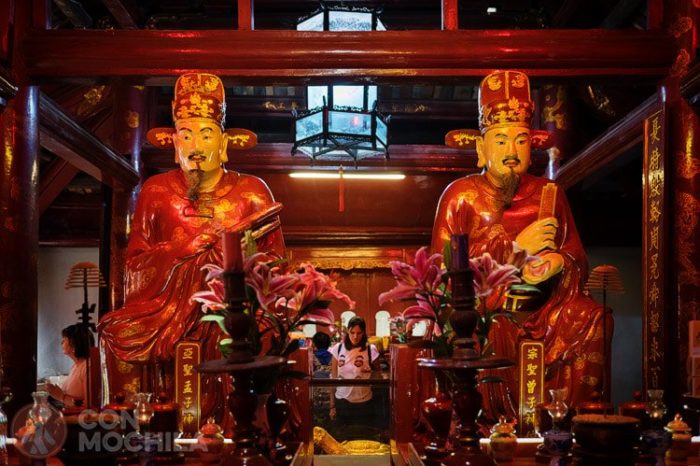
The temple grounds, usually crowded with tourists and multilingual guides, are one of the city’s most popular attractions. The complex consists of five courtyards with various buildings and altars.
The Ho Chi Minh Mausoleum is a grey, austere building, constantly guarded by solemn, motionless sentries. It’s located in the same area as the museum dedicated to the Vietnamese leader and the One Pillar Pagoda. In front of the mausoleum, groups of people are always gathered, taking photos.
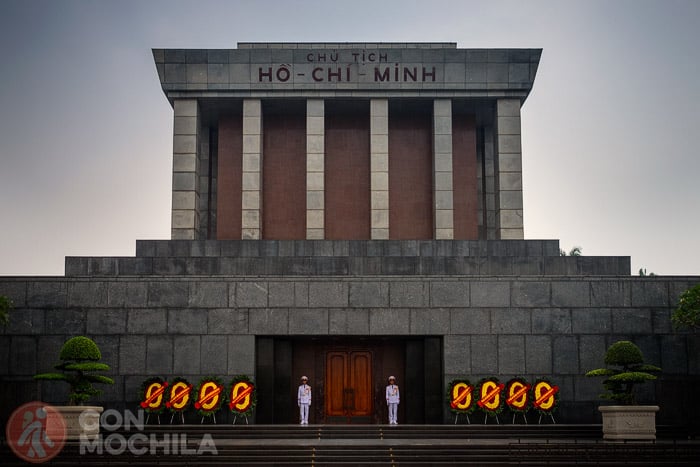
The One Pillar Pagoda is a small yet unique structure built atop a single pillar, accessible by a narrow staircase. Despite its small size, it remains an active place of worship, welcoming both tourists and believers. It’s located between the Ho Chi Minh Mausoleum and the museum, and admission is free.
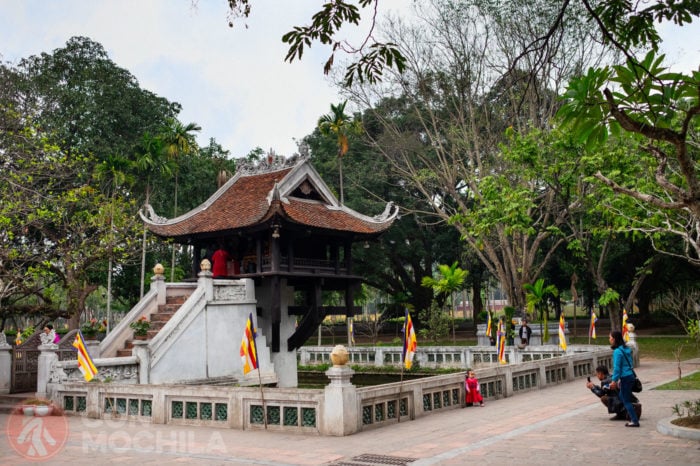
Vietnamese food is characterized by its freshness. We are addicted to spring rolls, as we’ve never found them as good anywhere else, both fried and fresh. Pho and bun cha are two typical dishes, and we highly recommend trying the latter at Bun Cha Ta, where you can also find a vegetarian version of the dish (60,000 – 100,000 VND).
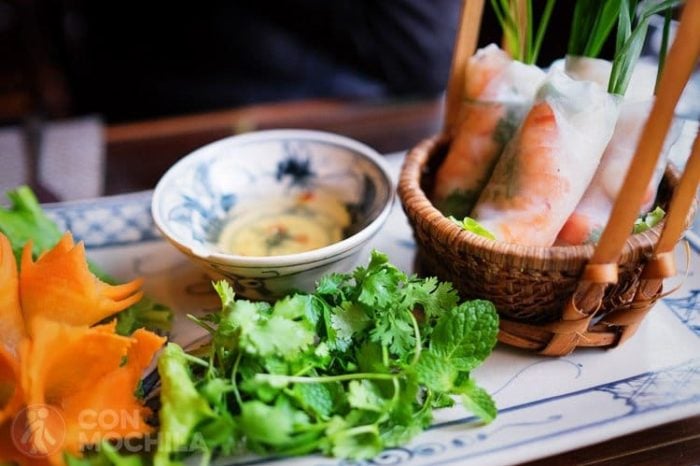
We’ll miss the taste and smell of garlic… Another local specialty is baguettes, which are sold from street carts on almost every corner.
What more can we say about Vietnamese coffee that we haven’t already said? We fell in love with cà phê from the very first sip, and when we knew we were returning to Hanoi, its taste and aroma immediately came to mind. Even more intriguing than how it’s prepared are the cafés with tiny chairs that flood the streets of Vietnam.
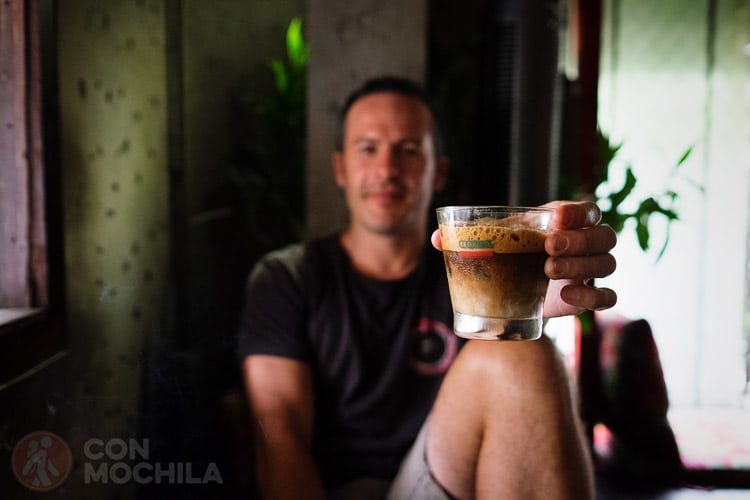
Even if you’re not a huge fan of coffee, you’ve got to try it. Note: the quality of coffee is often directly proportional to how far you are from touristy areas.
The Hanoi Citadel, or Hoàng Thành Thăng Long, was built in the 11th century by the Viet dynasty and has been a UNESCO World Heritage Site since 2010. Within the complex, where you can easily spend a couple of hours, you’ll find the palace, a bunker, an exhibition of traditional paintings, and even archaeological excavations.
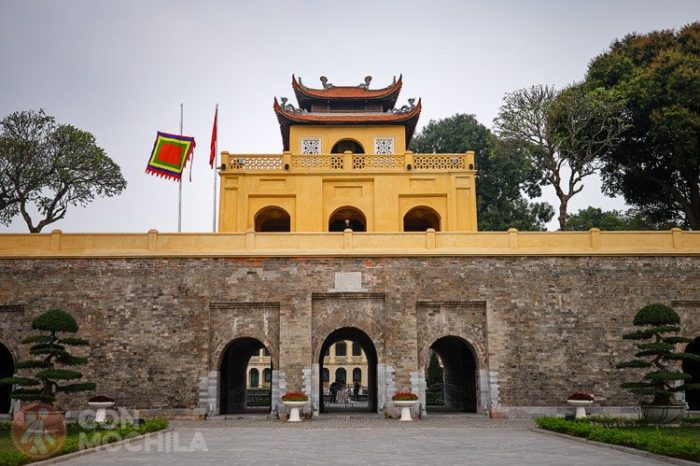
It’s common to see couples who have chosen this iconic place for their photo shoots.
Close to the mausoleum housing the remains of the Vietnamese leader is the Ho Chi Minh Museum, a two-story building that recounts his entire life through photos, letters, videos, and informative murals.
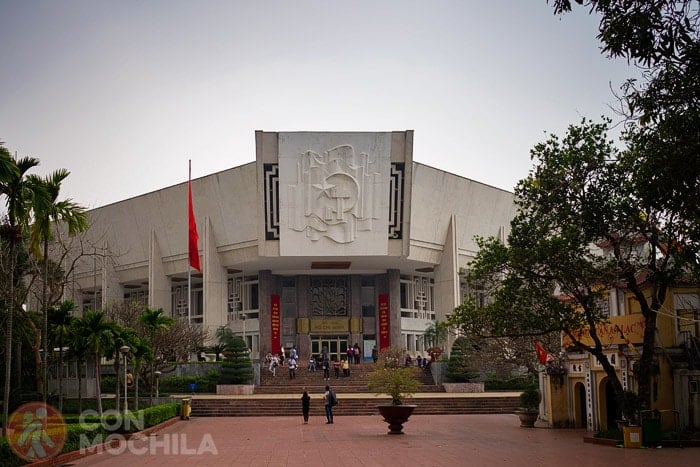
The history of Vietnam can be told through its wars, and that’s exactly what this military museum does. Comprising several buildings, it not only commemorates Vietnam’s battles with photos and war remnants, but it also features a fascinating collection of planes and helicopters, all in relatively good condition.
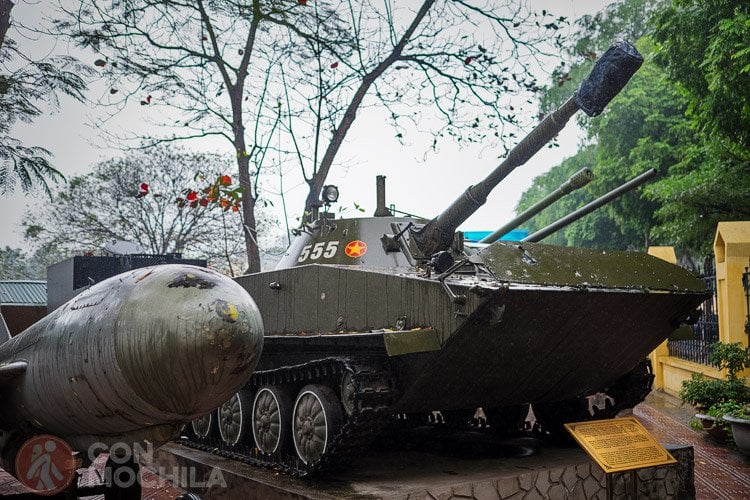
This educational and fascinating museum showcases the culture, customs, traditional costumes, and even full-scale houses from the many ethnic groups inhabiting Vietnam, allowing you to explore them firsthand.
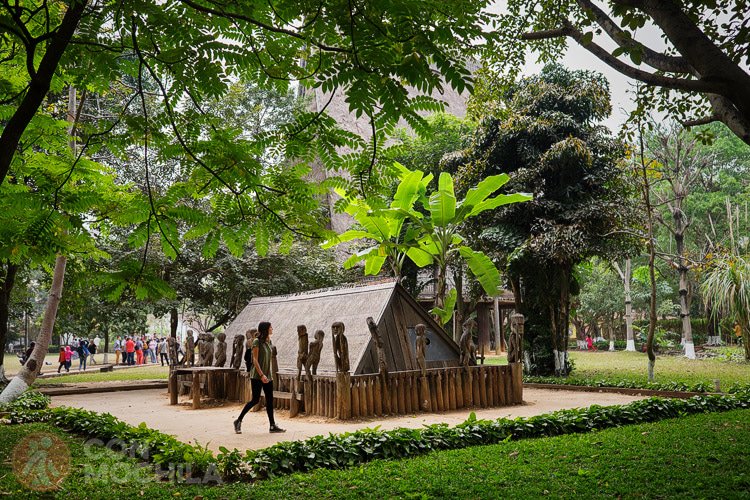
A touching museum dedicated to the women of Vietnam, highlighting both their roles in traditional cultures across various ethnic groups and their active participation in the Vietnam War. The top floor hosts rotating thematic exhibitions.
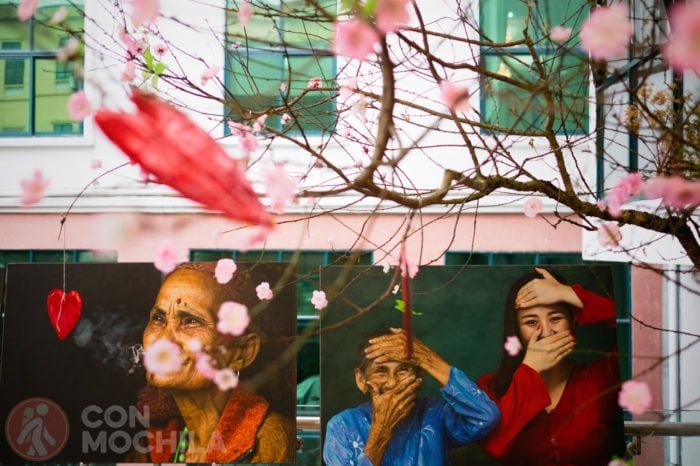
The former French-built Hoa Lo prison housed American pilots captured during the war. Ironically nicknamed the “Hanoi Hilton,” it’s now a museum filled with grim photographs and even a guillotine, telling its harrowing story.
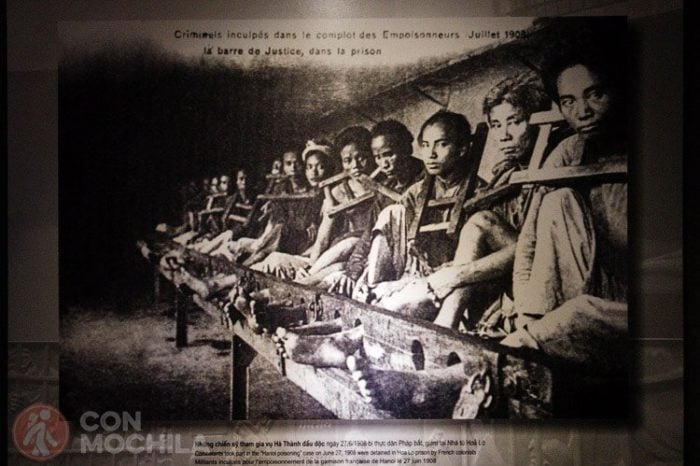
St. Joseph’s Cathedral, often referred to as the Little Notre Dame, was built by the French in 1886 and serves as the seat of the Archdiocese of Hanoi. Its neo-Gothic style and impressive size stand out, located just a short distance from Hoan Kiem Lake. If you stay nearby, you won’t miss the sound of its bells at night.
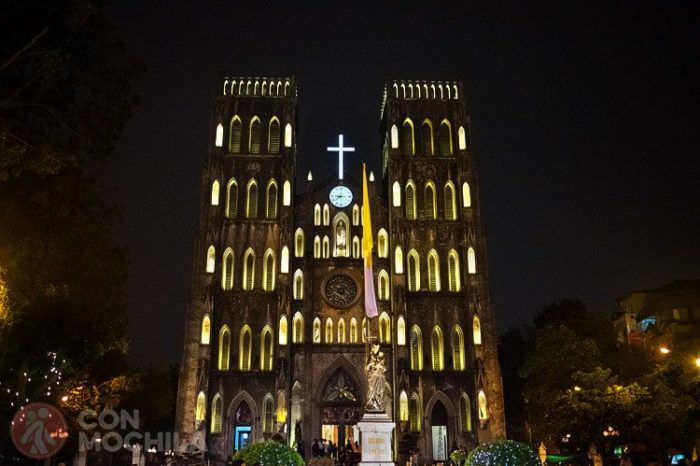
The remnants of the French colonial era can be seen in various colonial buildings scattered throughout Hanoi, giving the city a distinctive charm similar to other cities in former Indochina. Some of the houses in the Old Quarter can be visited.
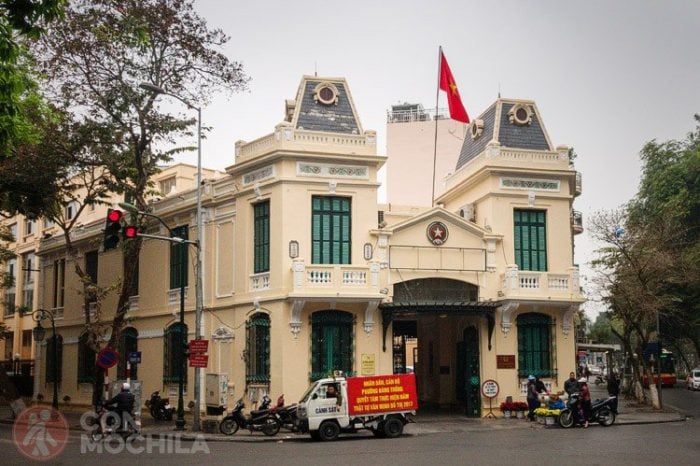
The Flag Tower is a symbol of Hanoi, built in 1812 by Emperor Gia Long. This iconic structure, which was saved from demolition by the French, is located within the grounds of the military museum, next to the Citadel.
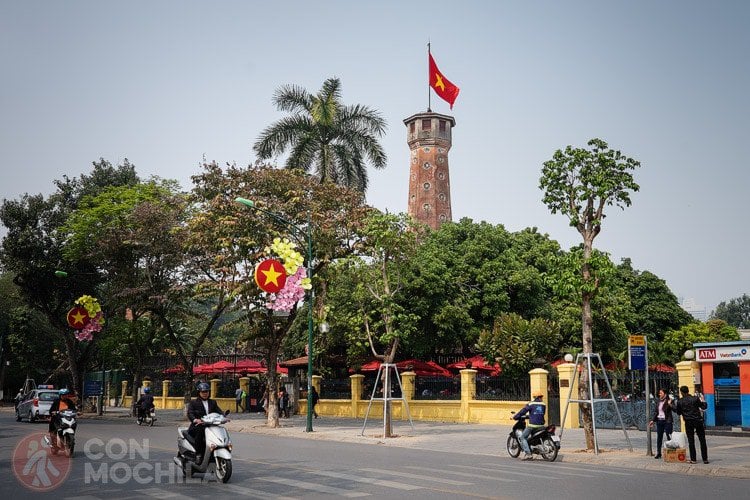
You can enter the tower and climb its three levels, which once served as an observatory, and from the top, you can see the warplanes displayed below.
Hanoi’s night market takes place on the streets of the Old Quarter during weekend nights, near the Dong Xuan market area. It’s not a tourist market, as most items sold are not geared toward travelers, but the stalls carry a variety of goods, including food, clothing, phone accessories, speakers, and even microphones.
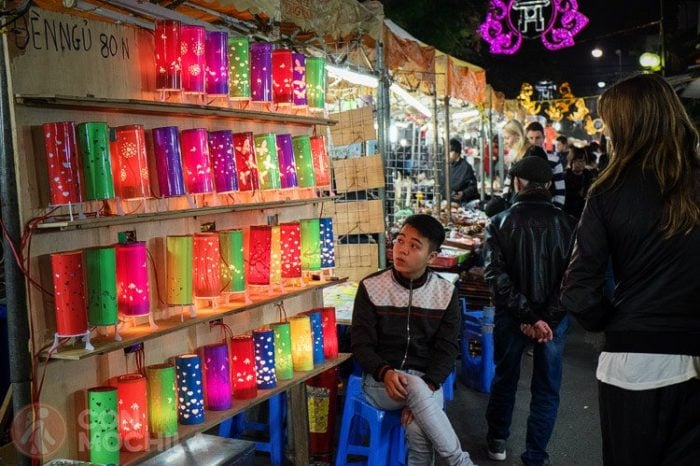
It’s worth strolling through the area and ending your walk at Hoan Kiem Lake, where the streets are closed to cars and its iconic buildings are illuminated.
On this private tour of Hanoi, you’ll explore the pagodas and other gems of the Old Quarter with a guide just for you.
Aboard the Hanoi tourist bus, you’ll visit the main attractions of Vietnam’s capital in a comfortable and convenient way. Plus, you can hop on and off as many times as you like.
If you want to explore the areas around the city, there’s nothing better than taking a day trip from Hanoi. Here are some we recommend:
Hanoi offers a wide range of accommodations for all budgets. In the Old Quarter, which is the most lively area and where you’ll find plenty of food stalls and restaurants, there are affordable hostels for those on a tighter budget, as well as hotels offering all kinds of comforts for those seeking a bit more luxury.
These are some other options in Hanoi:
If you’re staying in the Old Quarter, many places are within walking distance. We rented a motorbike for 150,000 VND per day because we wanted to explore more distant areas, and we found it to be a great option.
You can also take a taxi (be sure to insist on using the meter) or use Grab, which even offers motorbike rides.
Click on the image and it will take you to a new Google Maps window with all the points of interest to travel around Hanoi.